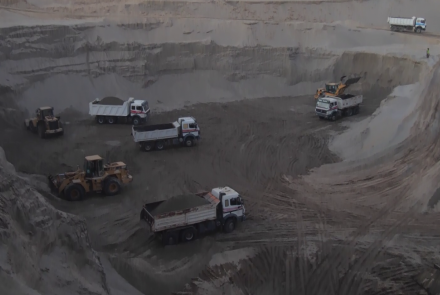The increase of Afghanistan’s exports, an increase of revenue income, and increased stability of Afghan currency against foreign currencies, as well as the start of some development projects, are noted as positive economic events of 1401 solar year, which was otherwise characterized by widespread poverty and economic instability.
International organizations including the UN expressed concerns over the high level of poverty in the country that also pushed more than 28 million people to require aid.
Despite a fall in GDP, Afghanistan’s exports abroad reached nearly $2 billion.
According to the economic deputy office of the Prime Minister, exports increased by 63% compared to the previous year.
In 1400 (solar year), Afghanistan’s exports were $850 but in 1401, they reached $1.9 billion.
The Ministry of Finance announced that it earned 100 billion Afs in the first 11 months of 1401.
“The increase in revenue of the customs office shows that professional employees and people who are committed to their work have been appointed. The corruption has dropped to zero,” said Ahmad Wali Haqmal, spokesman for the Ministry of Finance.
Many economic and development projects were inaugurated.
In the first month of 1401 (March 10), the construction of a major irrigation project named Qoshtipa began.
“Qosh Tepa Canal is one of the most significant development projects in the country. It was planned under the government of the late Sardar Mohammad Dawood Khan,” said Farid Azim, provincial manager of the National Development Company.
About four months later then, on July 27, 2022, the second part of the Kajaki dam was inaugurated in the southern province of Helmand.
The Deputy Minister of Foreign Affairs, Sher Mohammad Abbas Stanikzai, called on the Islamic Emirate to make efforts for the alleviation of poverty and the creation of jobs in the country.
“There are efforts day and night and we can stand the country on its feet economically,” he said.
The first batches of the afghani banknotes arrived in 1401.
A spokesman for the US Department of State, Ned Price, said at a press conference that the US and its partners have been working hard with the international banks to facilitate a payment transfer from Afghanistan’s Central Bank to European printing companies where new banknotes will be produced.
“This is about the welfare and the well-being of the Afghan people. They have suffered from the deterioration of these banknotes,” Price said.
On Dalwa of 1401 (January, 25 2022), the Central Bank said in a statement that the first tranche of 100 million new banknotes--with denominations of 10, 20, 50 and 100--were distributed to banks, and worn-out banknotes were collected.
“Da Afghanistan Bank, as the Central Bank, has the job of monetary policy, to print banknotes and distribute them to the market. While considering the policy for and demands of the market it collects the warn-out banknotes and injects new banknotes,” said Hassibullah Noori, a spokesman for the Central Bank.
On the 24th of Sunbola, September 14, 2022, the Afghanistan Trust Fund was established in Switzerland.
A board member of the Trust Fund, Shah Mohammad Mehrabi, told TOLOnews that the $3.5 billion fund--including $36 million and $34 million in interest--should be used for achieving monetary stability and reducing volatility in the Afghan currency exchange.
In early Haut, (February 22, 2022), a US judge decided that victims of the Sept. 11, 2001, attacks are not entitled to seize $3.5 billion of assets belonging to Afghanistan's central bank to satisfy court judgments they obtained against the Taliban.
Residents of Afghanistan have witnessed severe poverty and hunger in 1401, according to a humanitarian organization.
The UN announced that 28.3 million people need humanitarian aid in Afghanistan for 2023.
A report by the World Bank estimated that the real GDP is projected to contract further in 2022, with an accumulated contraction of close to 30-35 percent between 2021 and 2022.
Many citizens also suffered from various types of natural disasters including floods and a devastating earthquake in southeastern Afghanistan.
A devastating earthquake in Paktika province left hundreds of people dead and scores of others wounded—while thousands of houses were destroyed on 1 of Saratan 1401 (21-22 June, 2022).
The Islamic Emirate called on the international community to provide assistance to the people affected by the earthquake.
“Any issue, any step that affects the economy and has a negative impact on the people, should be isolated from political matters. We call for separation of humanitarian support from political issues all around the world,” acting Minister of Foreign Affairs Amir Khan Muttaqi said.
Meanwhile, experts said that the political issues have affected the Afghan economy.



Comment this post